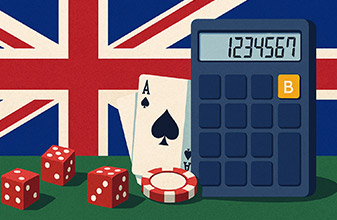Re: Huh?
> What do you mean by "latency of distribution"? Exactly how is this non-random? <
First, I did not say it was "non-random." But the very nature of randomness means that there must be portions of the (4D ShuffleMaster King) shoe which are rich, portions which are lean and portions which are "choppy."
To illustrate the effect, let's take the simple (and not entirely unrealistic) example where the first 2 decks have an excess of 8 high cards and the last 2 decks have an excess of 8 low cards. Thus the TC for the front 2 is +4 and the TC for the back 2 is -4.
Now two rounds (say 26 cards) are dealt, then fed into the machine to be randomly inserted into the remaining 3� decks. On average, 4/7ths of these cards with the character of a +4 TC will be inserted into the back 2 decks; and 3/7ths will be inserted into the front 1� decks.
Thus the remaining rich front portion of the shoe is no longer just 78 cards in size -- it is now, on average, 78 cards + 3/7 * 26 cards, or ~89 cards. IOW, you didn't burn up 26 cards worth of the +4 cards, you only burned up 4/7ths of them, since some (an average of 3/7ths of them) would be reinserted near the front of the shoe.
This is the "latency of distribution" I spoke of -- i.e., it takes longer to "use up" the cards at the front of the shoe than it does with a "normal" shuffle.










